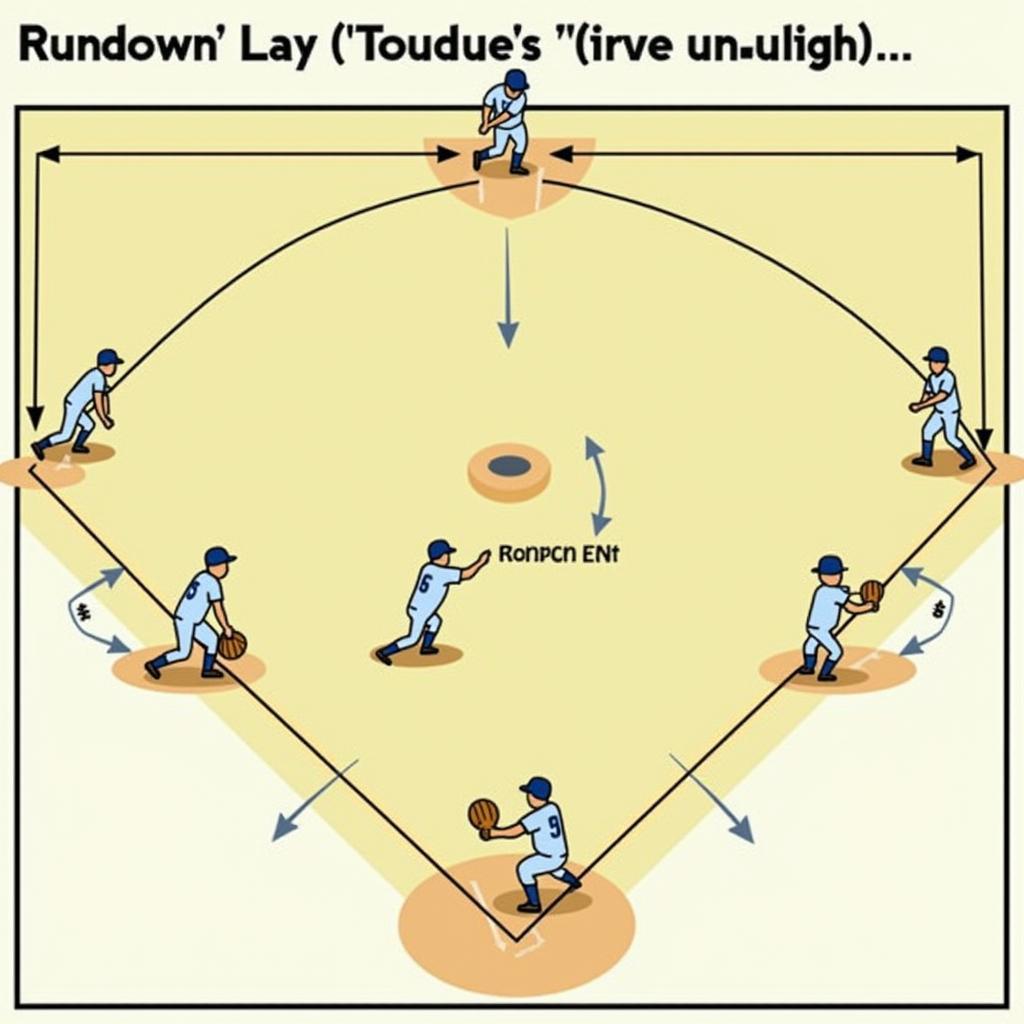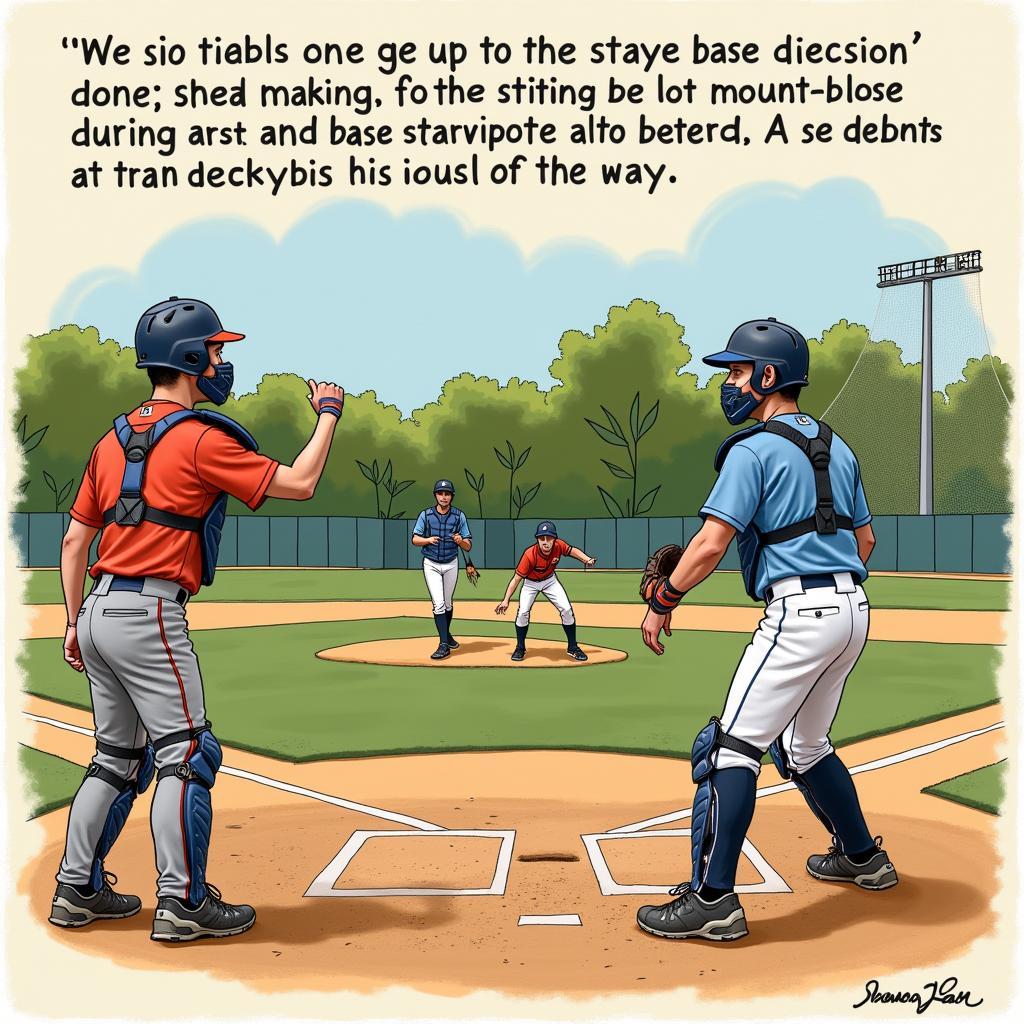Mastering 1st and 3rd Defense in Baseball
November 9, 20241st and 3rd defense in baseball presents unique challenges and opportunities. It’s a high-pressure situation where a single play can dramatically change the game’s momentum. Understanding the nuances of this defensive alignment is crucial for success at any level of play. This article will delve into the strategies, techniques, and communication required to execute effective 1st and 3rd defense, helping your team turn these tricky situations into advantages.
Understanding the Dynamics of 1st and 3rd Defense
With runners on first and third, the defense is spread thin, needing to cover both potential steals and a likely attempt to score on a batted ball. This requires a coordinated effort between infielders, outfielders, and the catcher, relying on anticipation and quick reactions. Effective 1st and 3rd defense minimizes the damage potential of this high-leverage situation.
The Importance of Communication
Clear and concise communication is the backbone of a successful 1st and 3rd defense. Before the pitch, the infielders, outfielders, and catcher should confirm the defensive play being called. This ensures everyone is on the same page and ready to react accordingly. During the play, ongoing communication is vital, especially between the catcher and pitcher covering plays at the plate.
Knowing who covers second base on a steal attempt, who backs up throws, and where the cutoff man is positioned are essential elements of a smooth and efficient 1st and 3rd defense. Confusion can lead to errors and allow the opposing team to capitalize.
Different Defensive Strategies for 1st and 3rd
There are various defensive strategies employed for 1st and 3rd situations, each with its own strengths and weaknesses. One common approach is the “run down” play, where the defense attempts to trap the runner stealing second base. This can be a risky play, but if executed properly, it can result in an out and significantly reduce the offensive threat. Another strategy involves having the middle infielders play closer to second base, cutting off the advancement of the runner from first. This allows for quicker plays at second and potentially limits scoring opportunities.
The choice of strategy depends on various factors such as the score, inning, the opposing team’s tendencies, and the specific strengths and weaknesses of the defensive players. A coach must carefully analyze the situation and choose the play that maximizes their team’s chances of success.
 Baseball rundown play between first and second base
Baseball rundown play between first and second base
The Catcher’s Role in 1st and 3rd Defense
The catcher plays a pivotal role in 1st and 3rd defense. They are responsible for calling the defensive play, relaying signals to the infielders and outfielders, and making quick decisions on throws to home plate. The catcher needs to be aware of the runners’ speed, the batter’s tendencies, and the game situation when determining the best course of action. A strong, decisive catcher can significantly impact the outcome of a 1st and 3rd situation.
A good catcher will also be adept at blocking pitches in the dirt, preventing wild pitches and passed balls that could allow runners to advance. Their ability to control the running game is crucial in these high-pressure situations.
 Catcher signaling to infielders during a 1st and 3rd base situation
Catcher signaling to infielders during a 1st and 3rd base situation
Practicing 1st and 3rd Defense Drills
Regular practice is essential for mastering 1st and 3rd defense. Drills should focus on communication, quick reactions, and precise execution of different defensive plays. Repetition allows players to develop the muscle memory and instincts necessary to perform effectively under pressure. Simulated game scenarios can also help players familiarize themselves with the complexities of 1st and 3rd defense and improve their decision-making skills.
In conclusion, 1st and 3rd defense is a crucial aspect of baseball that demands a combination of strategy, communication, and execution. By understanding the dynamics of these situations and implementing effective defensive strategies, teams can minimize runs and gain a significant advantage. Practice and communication are key to mastering the art of 1st and 3rd defense in baseball.
FAQ
-
What is the most common mistake teams make in 1st and 3rd defense?
Lack of communication is often the biggest culprit. -
What’s the best way to practice 1st and 3rd defense?
Regular drills and simulated game scenarios are highly effective. -
What is the role of the outfielders in 1st and 3rd situations?
Backing up throws and being ready for a potential extra-base hit. -
How can a team improve its 1st and 3rd defense?
Through consistent practice and clear communication between players. -
What factors determine the best defensive strategy for 1st and 3rd?
The score, inning, opposing team’s tendencies, and the strengths of your defense. -
What are some common 1st and 3rd defensive plays?
The rundown play and variations involving holding runners close to their bases. -
Why is the catcher so important in these situations?
They control the defense, call plays, and manage throws to home plate.
For further assistance, please contact us at Phone Number: 0963418788, Email: [email protected] or visit our address: 2M4H+PMH, Phường Nghĩa Thành, Gia Nghĩa, Đắk Nông, Việt Nam. Our customer service team is available 24/7.